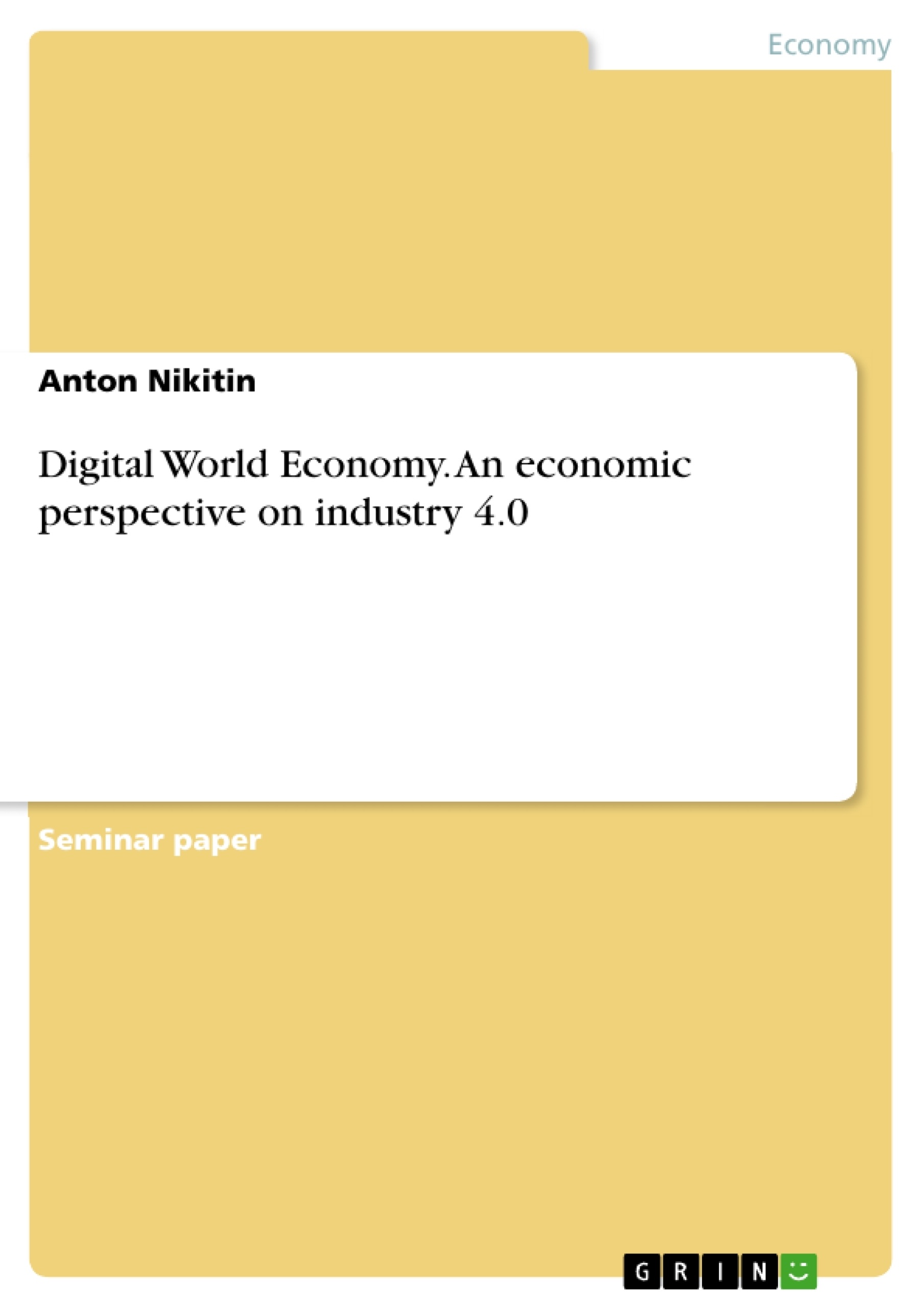The elementary technology the “Internet” enabled the fourth industrial revolution. It changed the way people work. The collaboration in server-clouds and the so-called “Internet of Things” allows even machines to interact. Many questions are still unsolved, e.g. the key technologies or their impact on the economic growth of economics. Nowadays the transformation process is ongoing while the impact of this technological change is still unclear. The McKinsey consulting group estimates that just the internet accounts for 21 percent of the GDP growth in major economies over the past five years. Furthermore, researcher mention that the share of ICT capital is often underestimated. In real terms (evaluated in prices in 1995), the share of ICT was roughly twice as high, because of the continuously falling prices for ICT technologies and services. Fifteen years prior, the landscape internet-driven companies seemed to stop the growth path after the “Dotcom-Crash”. Before, the expectations of immense productivity gains were higher than the possibilities of the technology. Also, the average employee was not ready to handle the challenges of digitalization, robotic and the pace of technological change. In 2017 digitalization and automatization literature provides a wide range of IT-specific but also managerial-specific guidance. Available economic papers refering to industry 4.0 are comparatively few. And if available, then are more focused on the impact of ICT on economic growth. This paper tries to fill the gap to the point of a political-economic perspective on industry 4.0. The object of interest is particularly productivity changes caused through digitalization and automatization which can be summed in the main driving forces of industry 4.0. The initial point of the investigation is the theoretical framework of the Cobb-Douglas-Production-Function. It will be converted in an applied model form, which could be tested with the EU KLEMS database. To justify a claim of this kind, growth accounting estimates are used. The traditional neoclassical methodology determines a contribution to growth from an exogenous technological change in the Solow residual estimate of total factor productivity (TFP) growth.
Inhaltsverzeichnis (Table of Contents)
- 1 Introduction
- 1.1 Current State of Research
- 2 Theory: Solow Growth Model
- 3.1 Applied Models: Cobb-Douglas-Production-Function
- 3 Empirical Investigation
- 4.1 Methodology correspondent to empirical investigation
- 4.2 Definitions
- 4.3 Case Studies of Industry 4.0
- 4.4 Data
- 4.5 Results
- 5 Policy Conclusion
- 5.1 Outline
- 5.2 Open Fields and Regulation
Zielsetzung und Themenschwerpunkte (Objectives and Key Themes)
This paper aims to provide an economic perspective on the current development of Industry 4.0. It discusses a theoretical framework and adapts it for empirical investigation. The insights from this investigation should help to quantify the ongoing debate about Industry 4.0 and establish a foundation for feasible forecasts of its impact.
- The impact of Industry 4.0 on economic growth
- The role of information and communication technology (ICT) in driving economic development
- The theoretical framework of the Solow Growth Model and its application to Industry 4.0
- Empirical investigations of Industry 4.0 through case studies and data analysis
- Policy implications and recommendations for navigating the future of Industry 4.0
Zusammenfassung der Kapitel (Chapter Summaries)
- Chapter 1: Introduction introduces the topic of Industry 4.0 and its significance in the context of economic growth. It highlights the current state of research and sets the stage for the paper's objectives.
- Chapter 2: Theory: Solow Growth Model delves into the theoretical foundation for understanding economic growth and its application to Industry 4.0. The Solow Growth Model is introduced and explained, providing a framework for analyzing the impact of technology and capital on economic development.
- Chapter 3: Empirical Investigation presents the methodology and findings of an empirical study on Industry 4.0. This chapter includes definitions, case studies, data analysis, and results, offering insights into the real-world impact of Industry 4.0 across different sectors and regions.
- Chapter 4: Policy Conclusion discusses the implications of the empirical findings for policymaking. It outlines recommendations for navigating the future of Industry 4.0, including strategies for promoting innovation, fostering economic growth, and addressing potential challenges.
Schlüsselwörter (Keywords)
Industry 4.0, Economic Development, Future, Industrial Revolution, Economies of Scale, Economic Perspective, Information and Communication Technology (ICT), Solow Growth Model, Cobb-Douglas-Production-Function, Empirical Investigation, Case Studies, Policy Implications.
- Arbeit zitieren
- Anton Nikitin (Autor:in), 2018, Digital World Economy. An economic perspective on industry 4.0, München, GRIN Verlag, https://www.grin.com/document/443008



